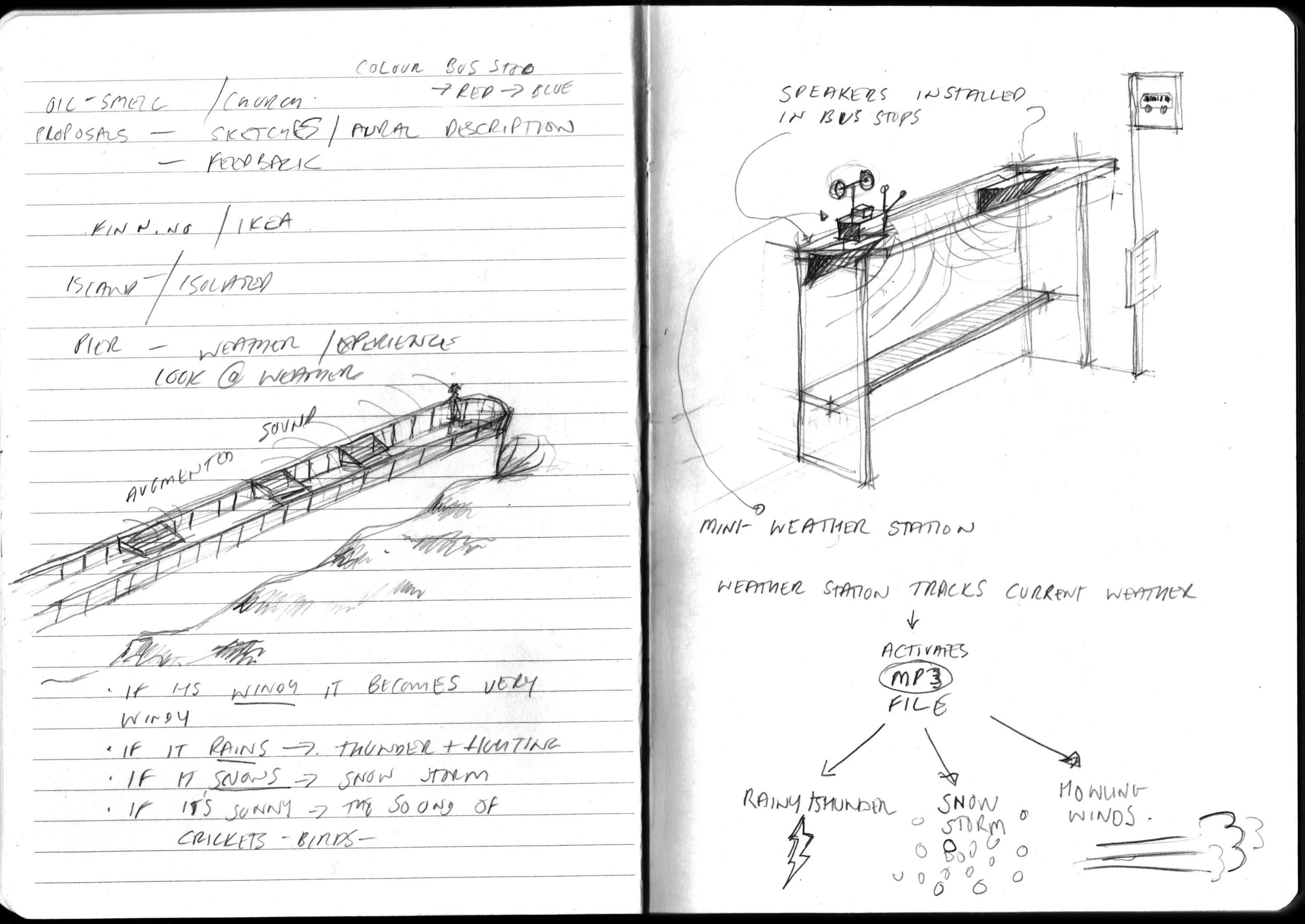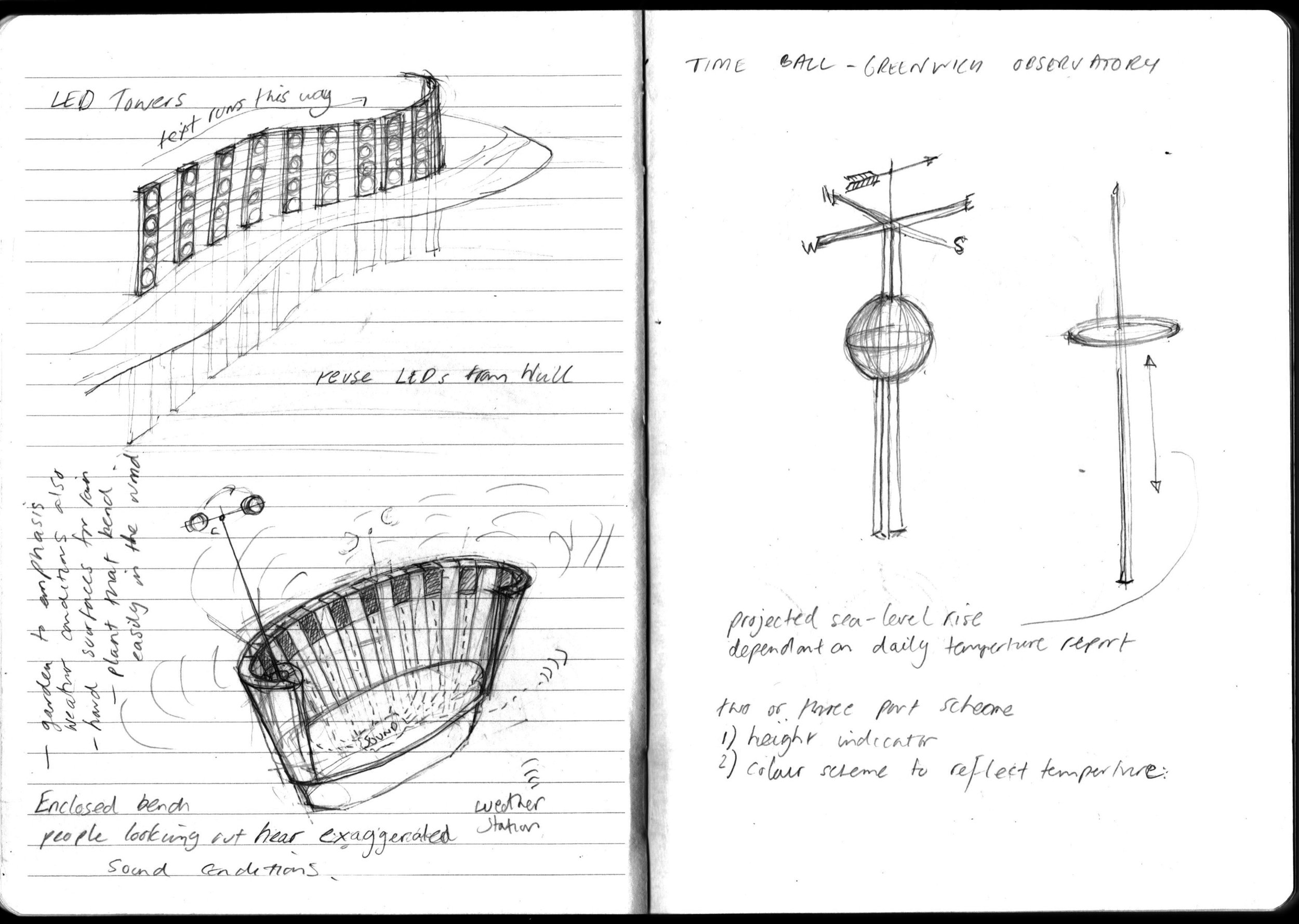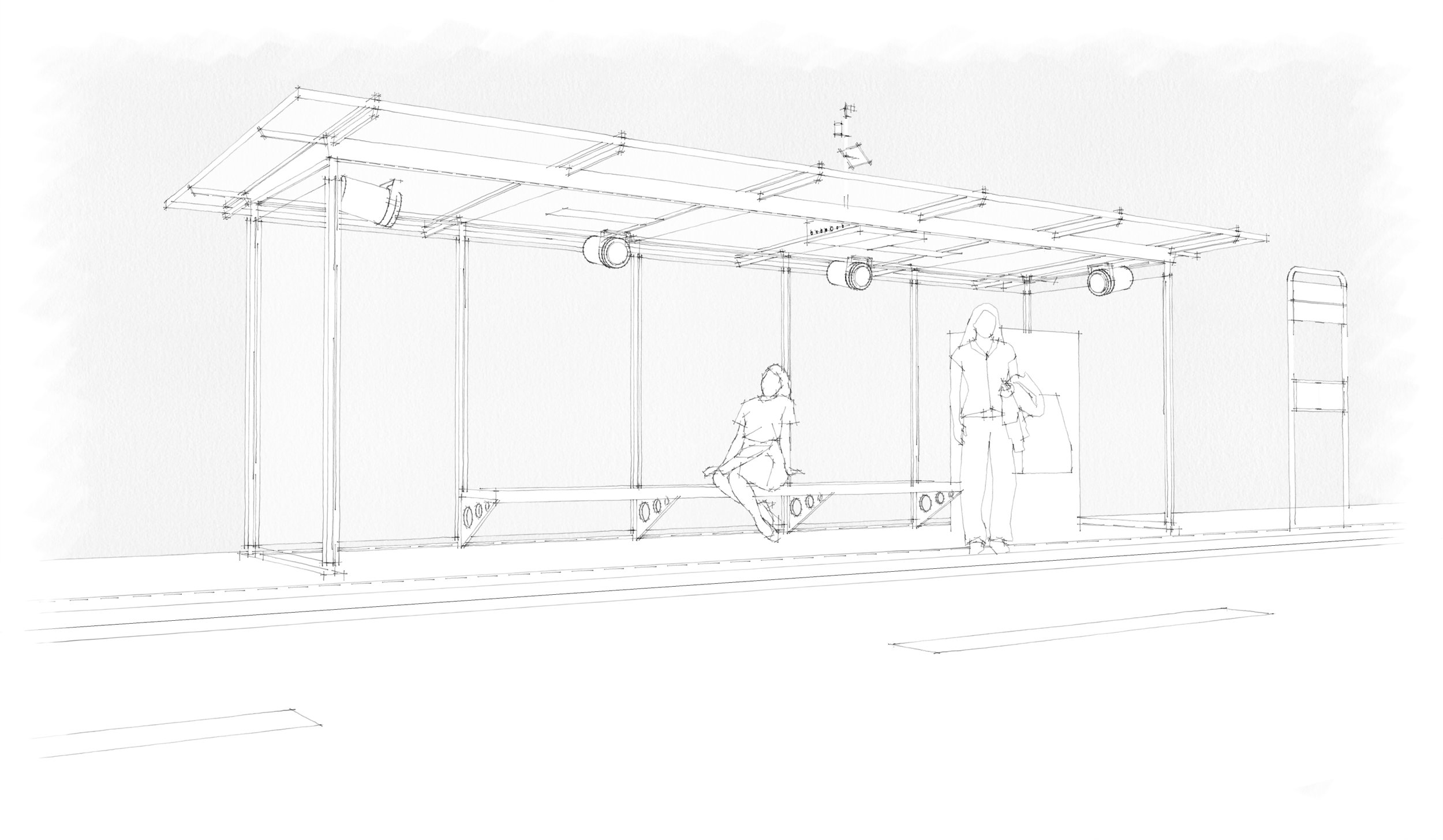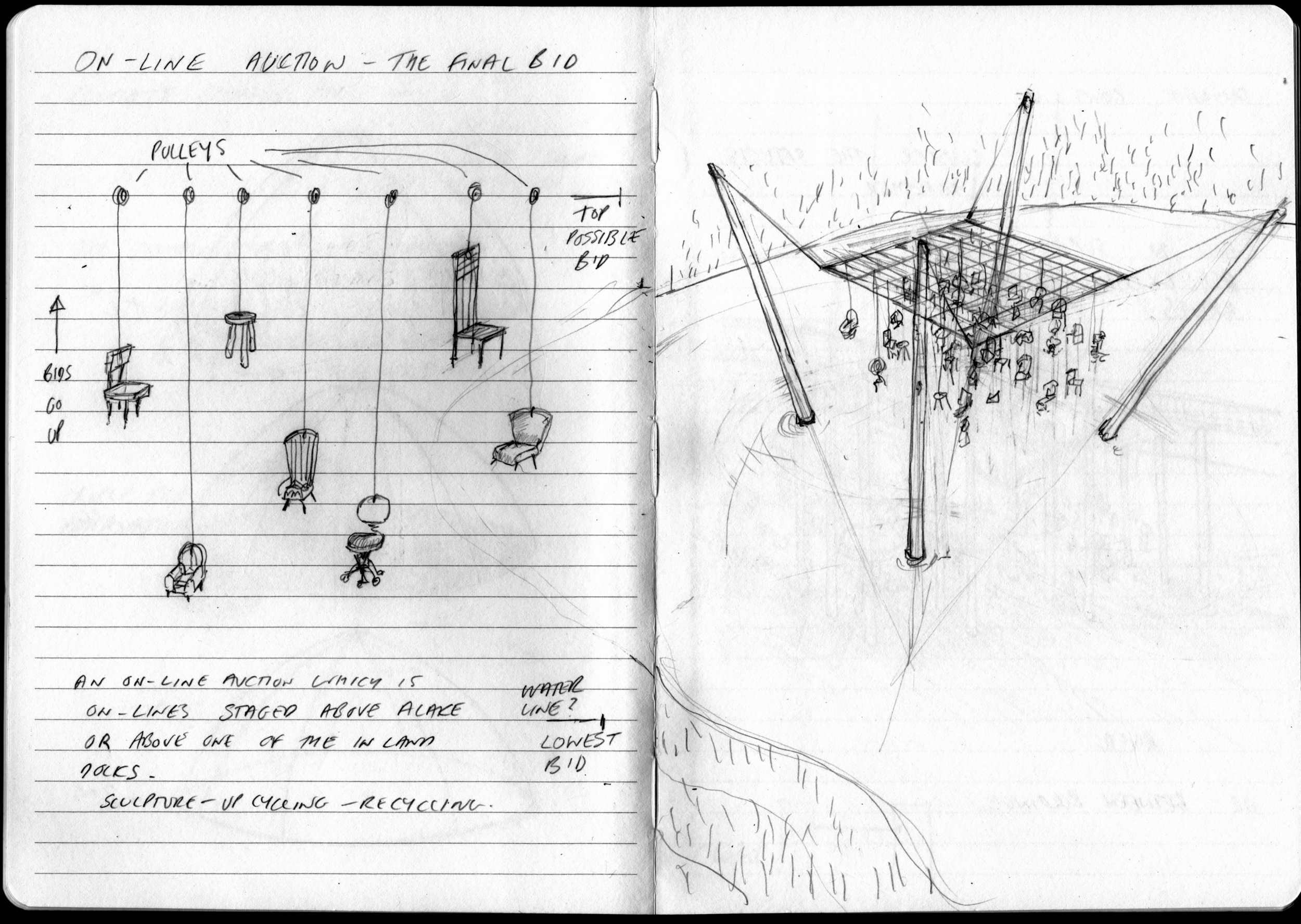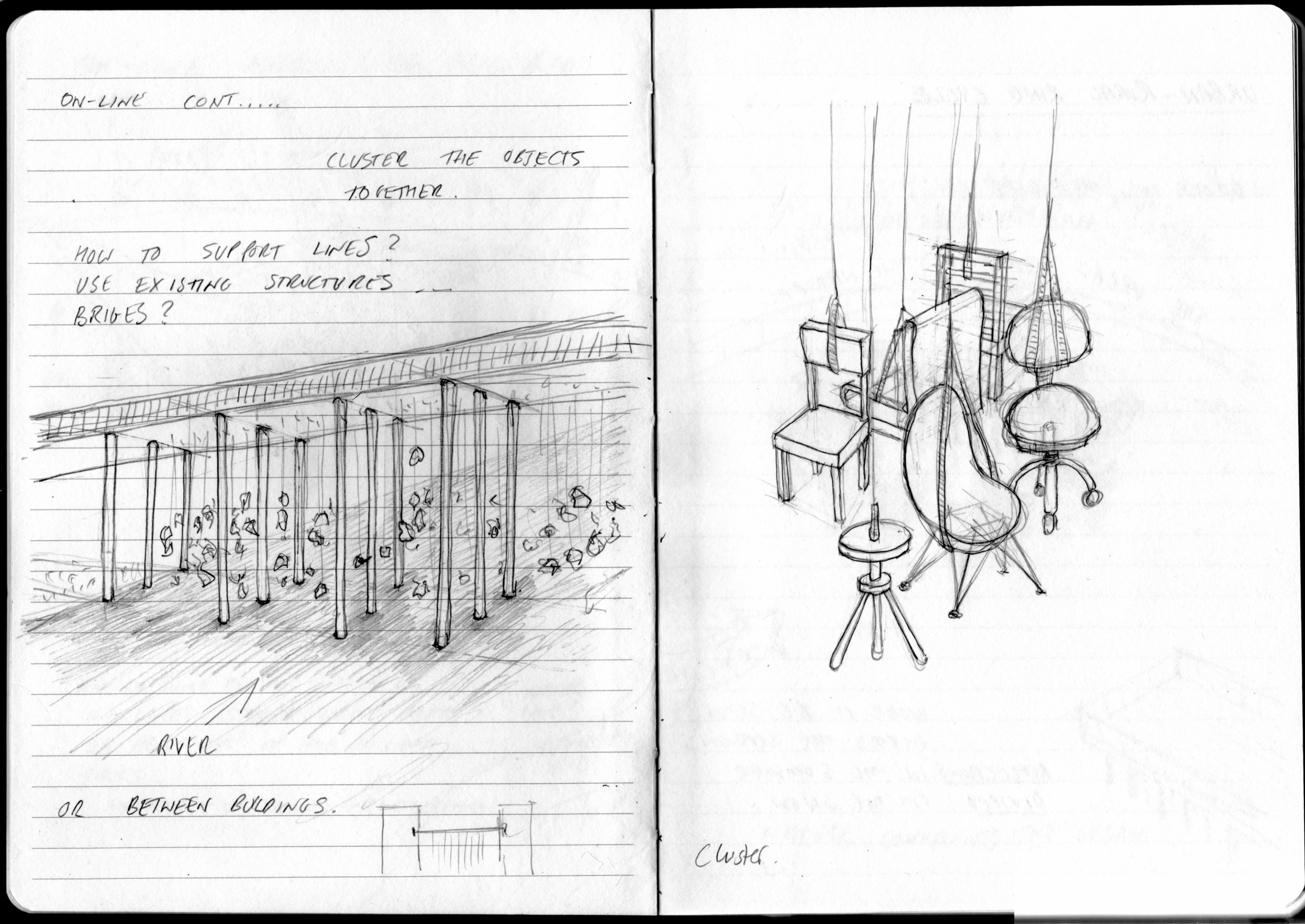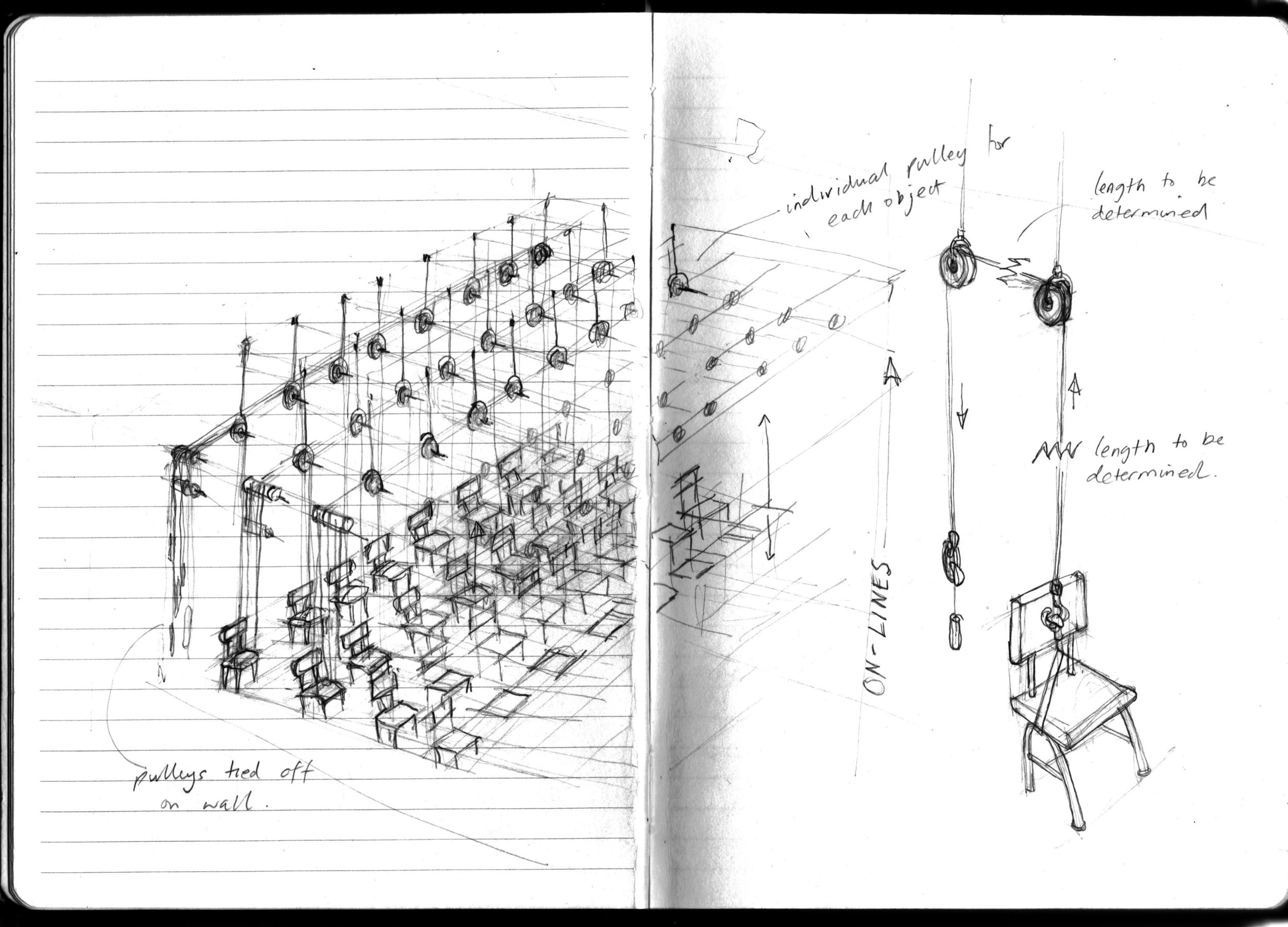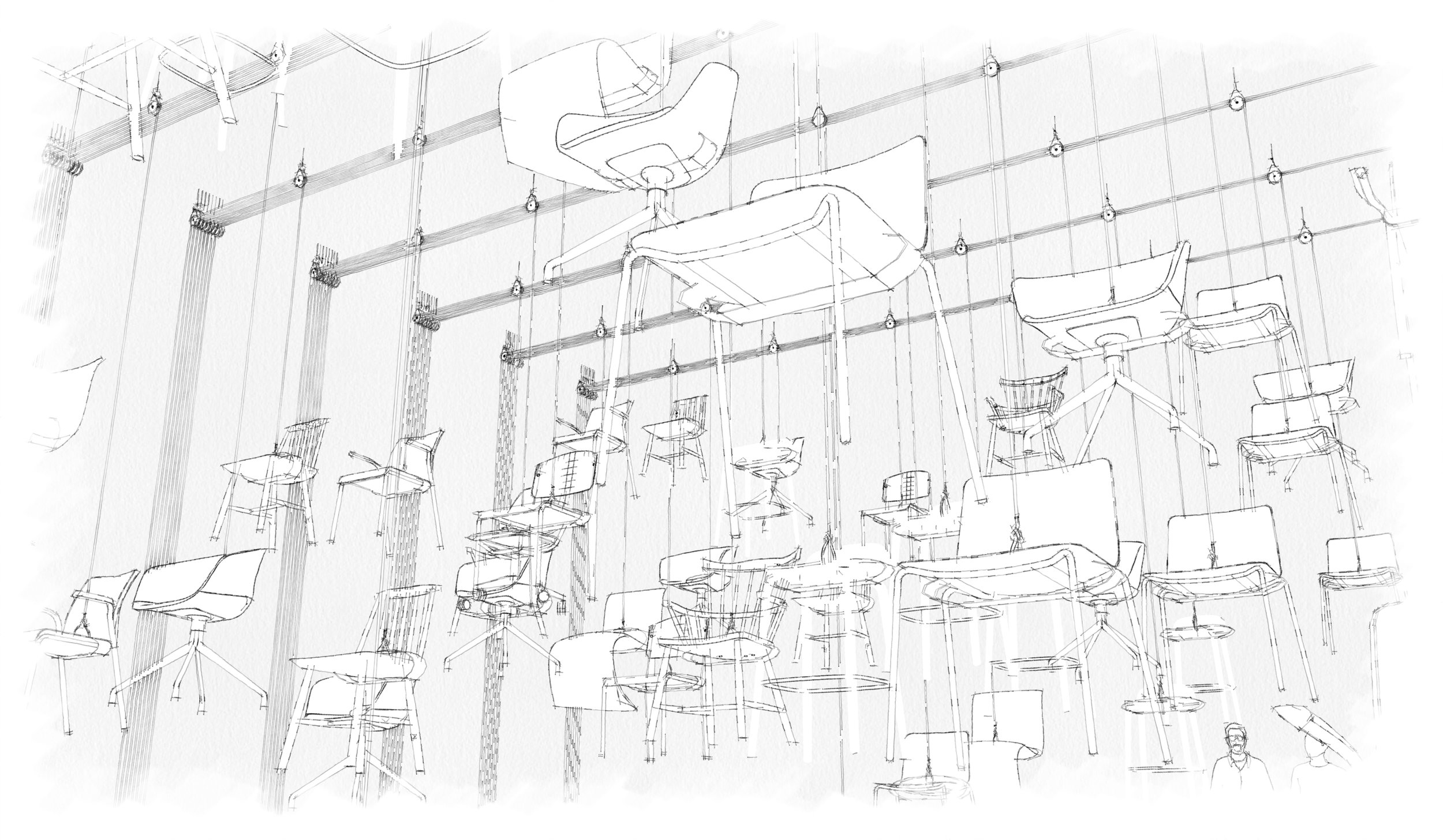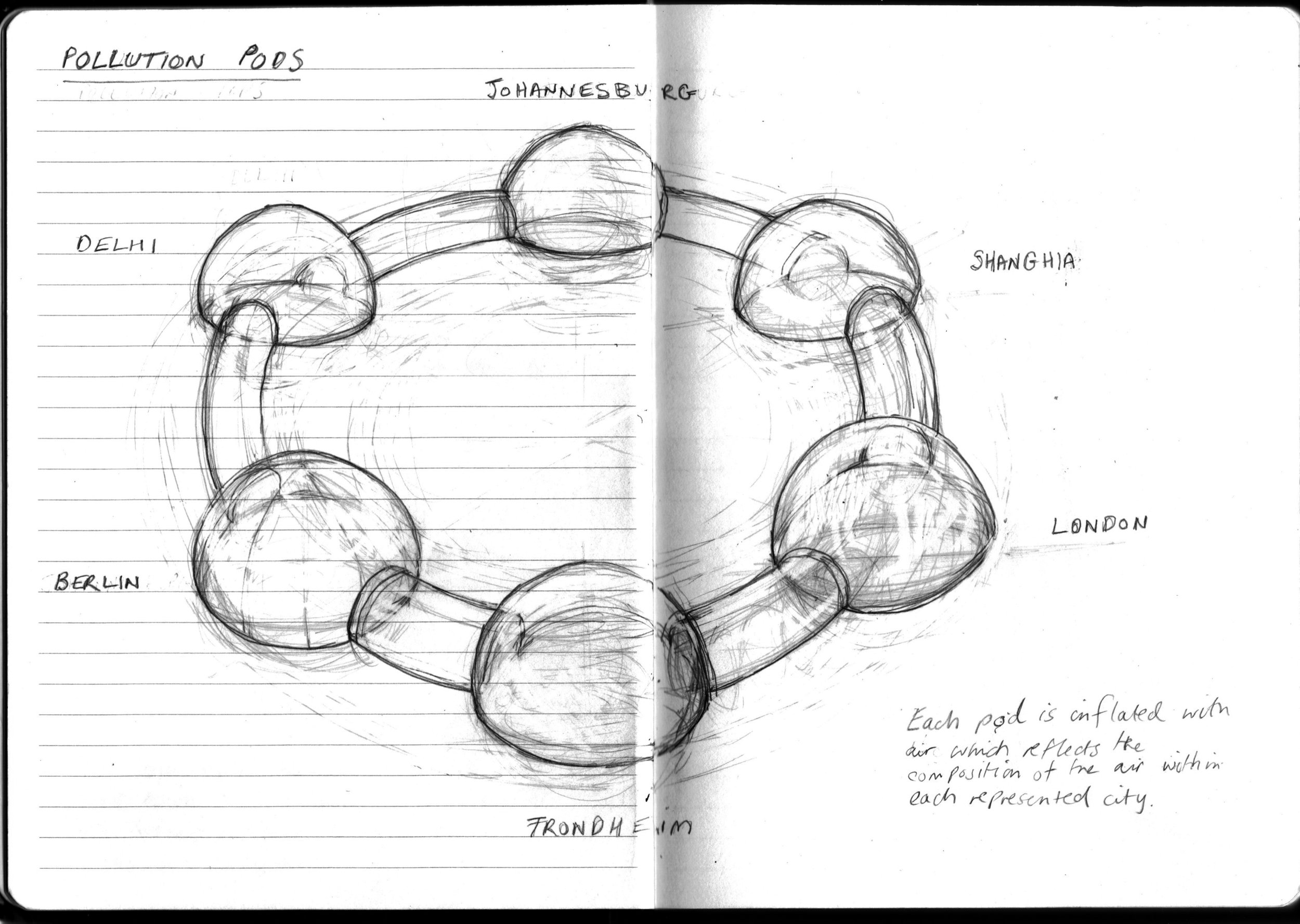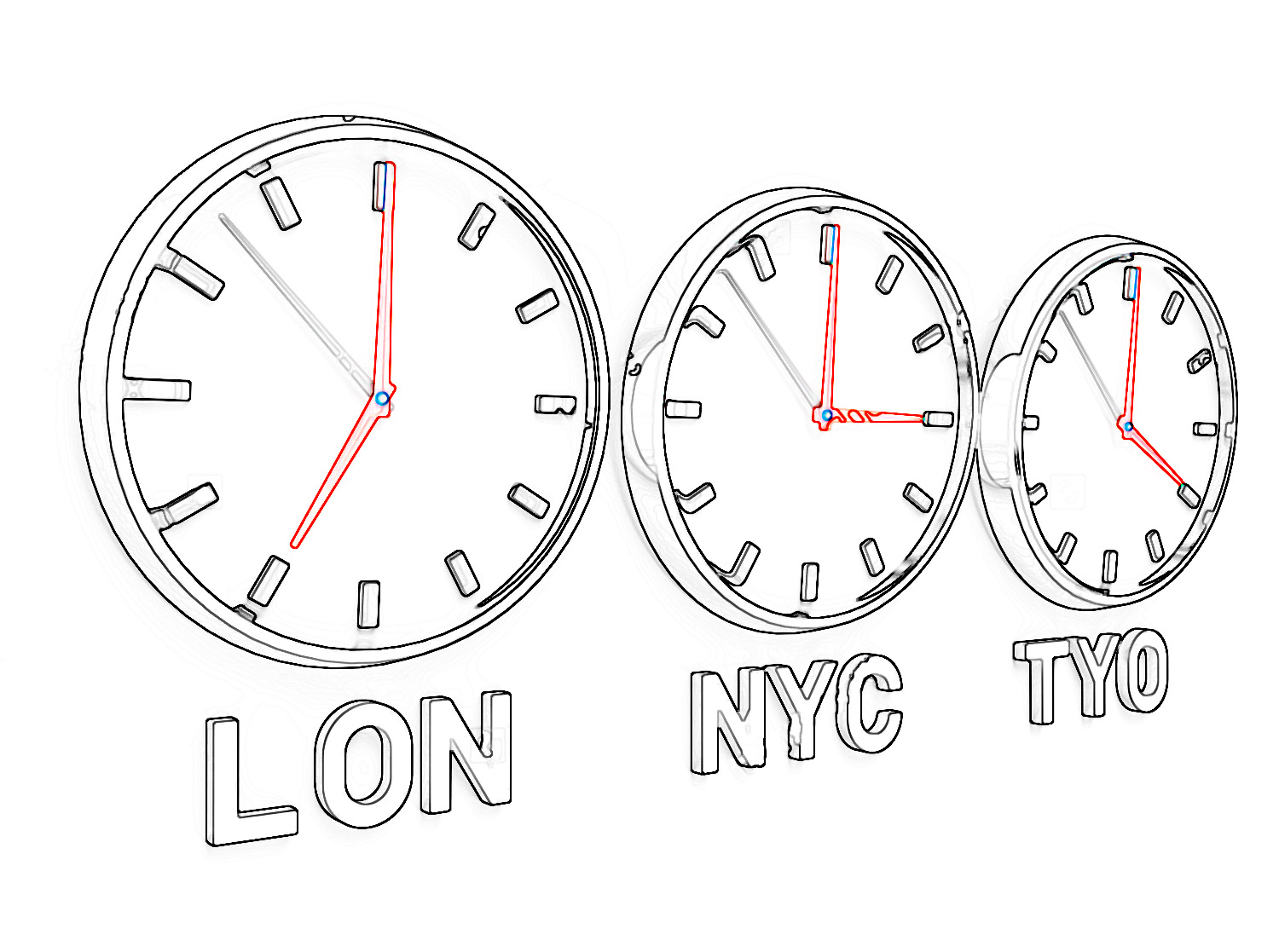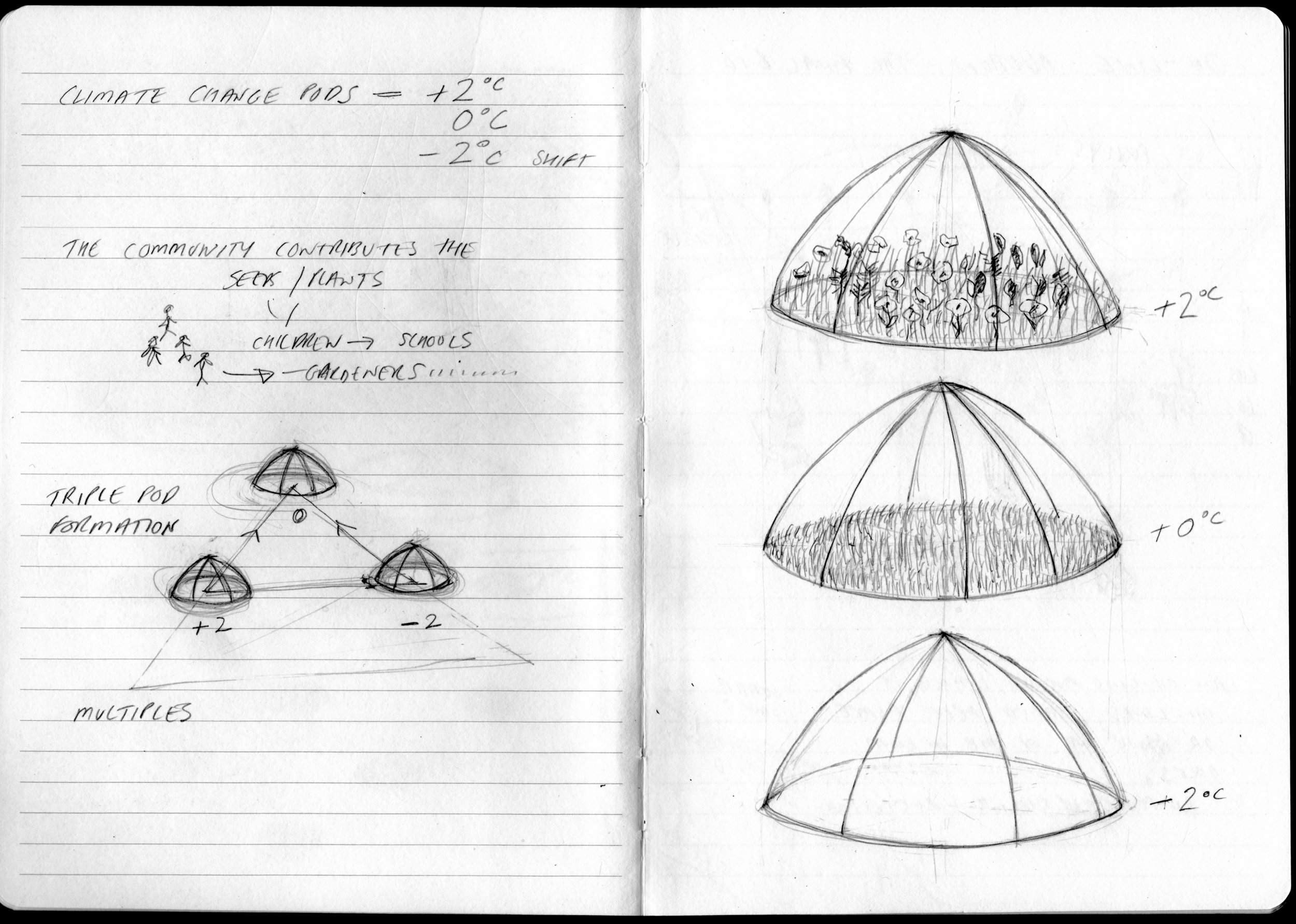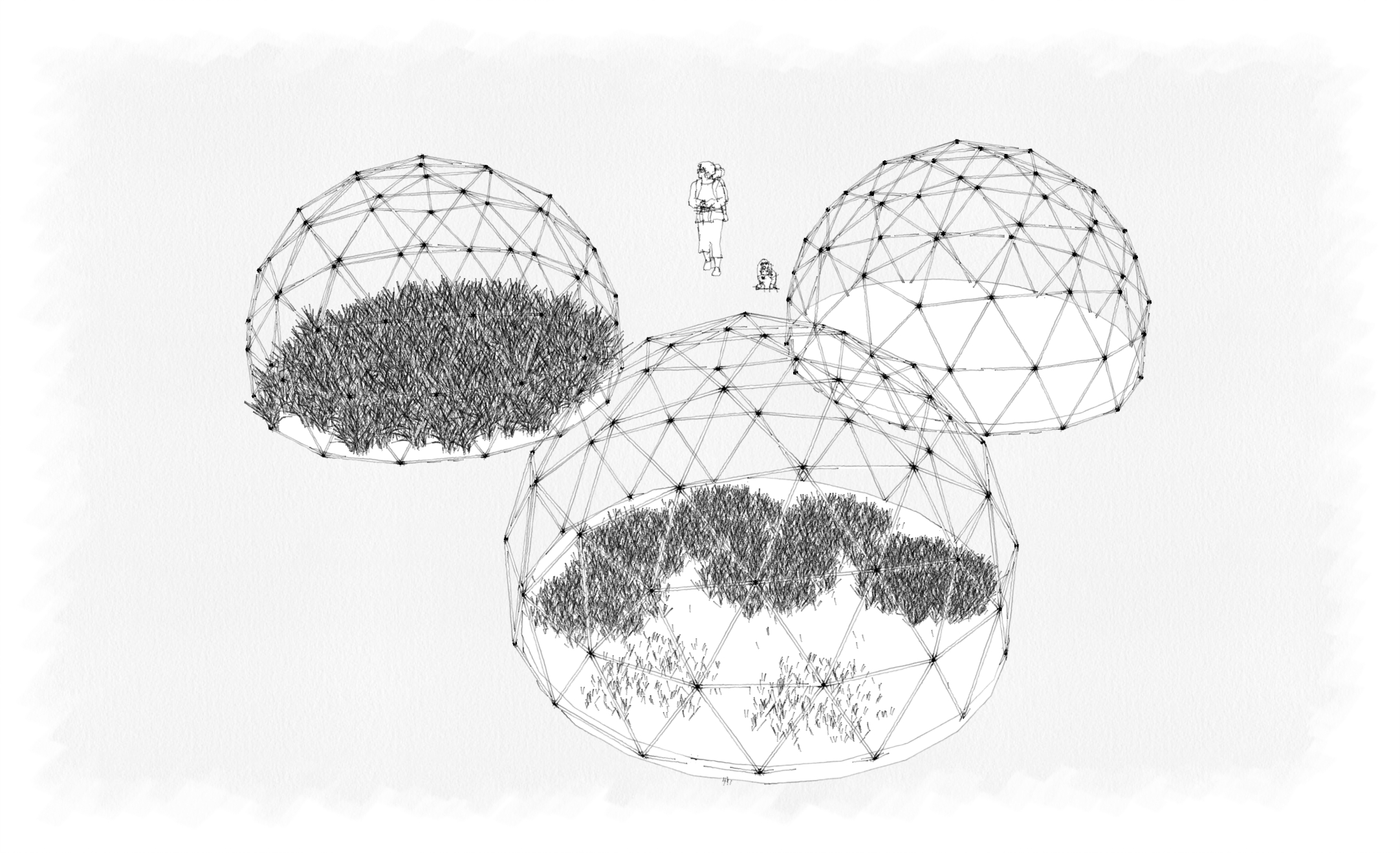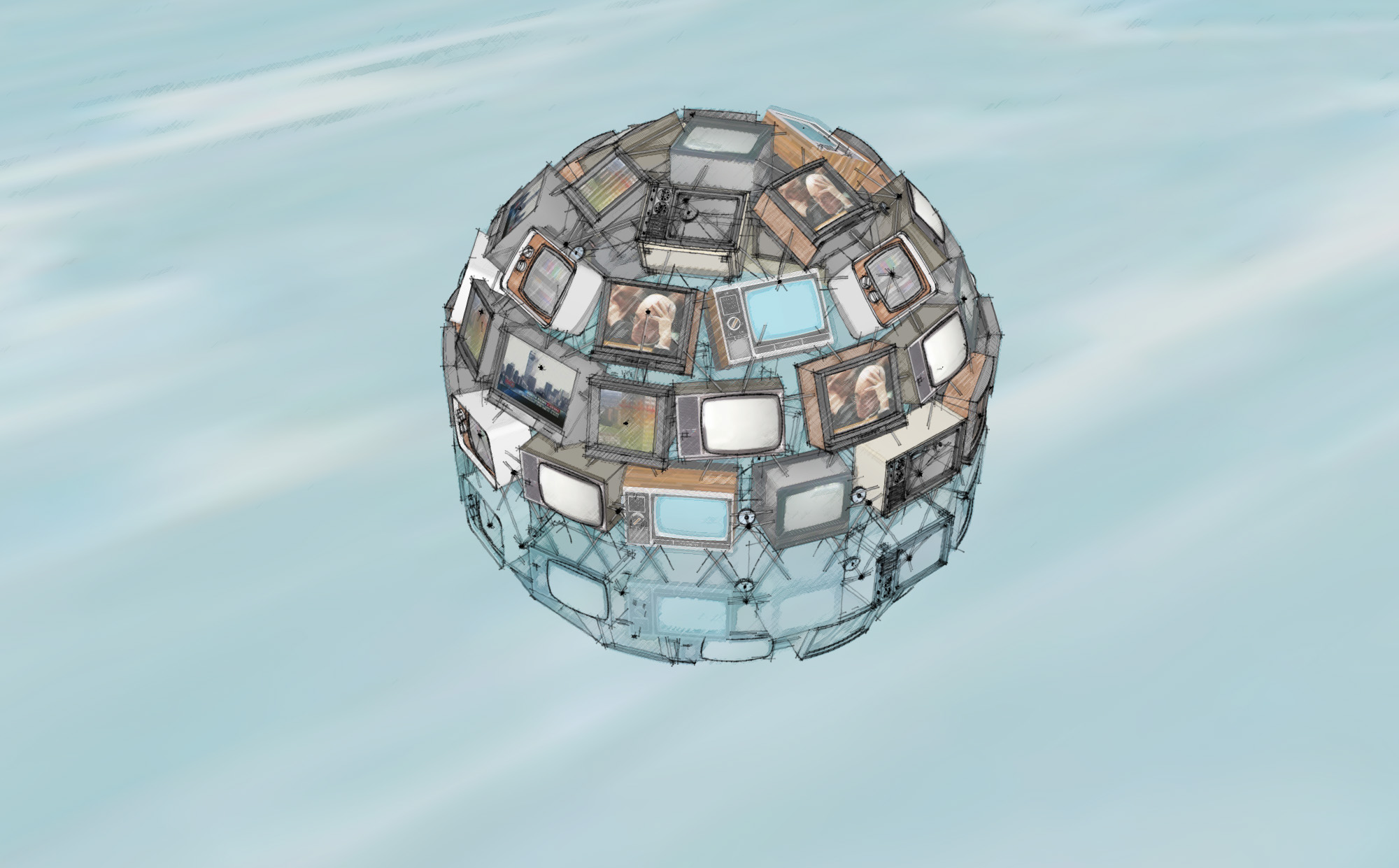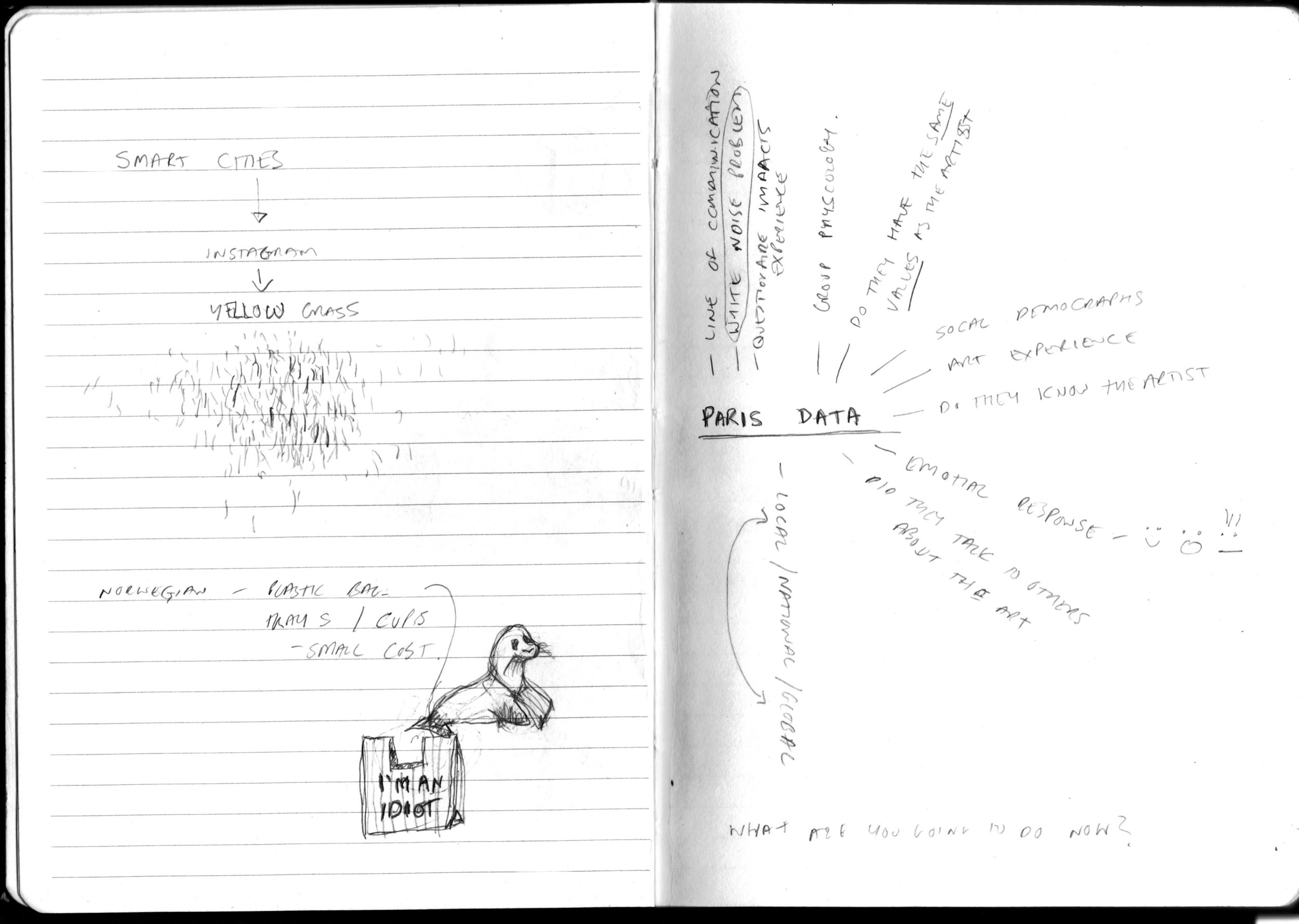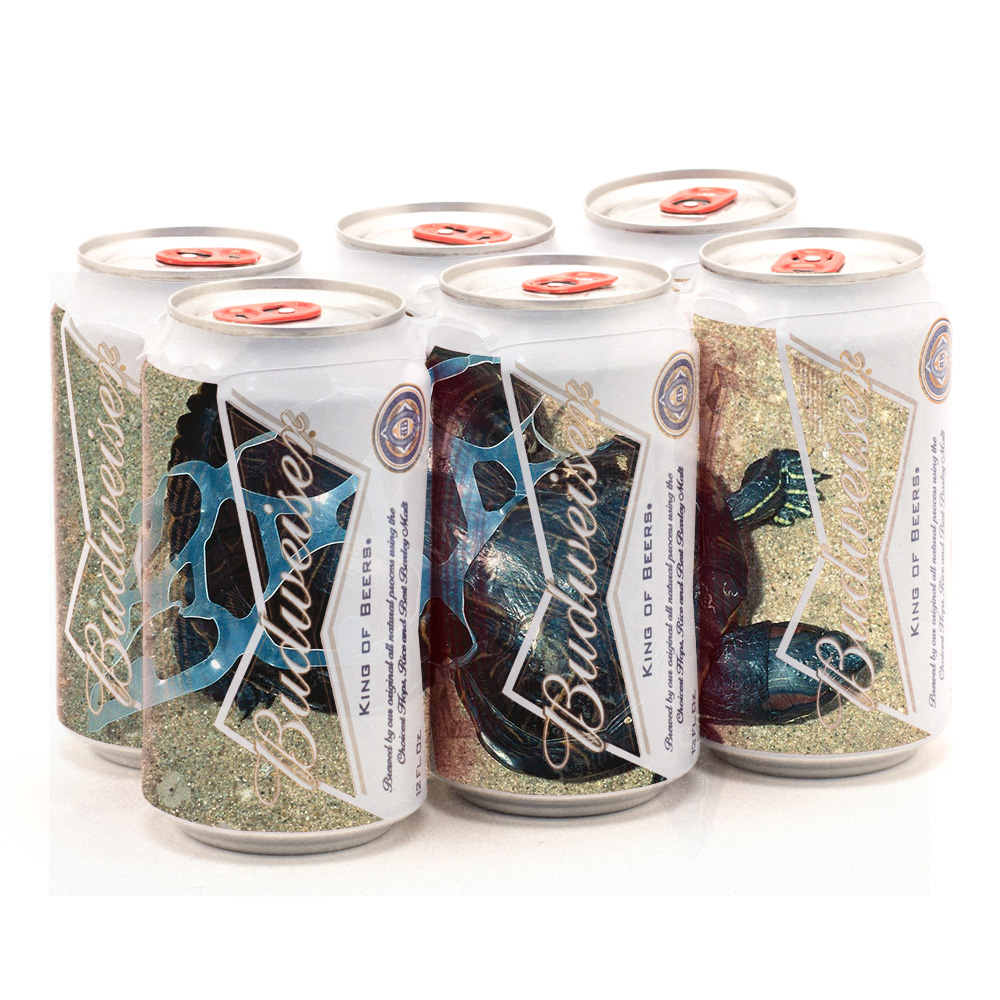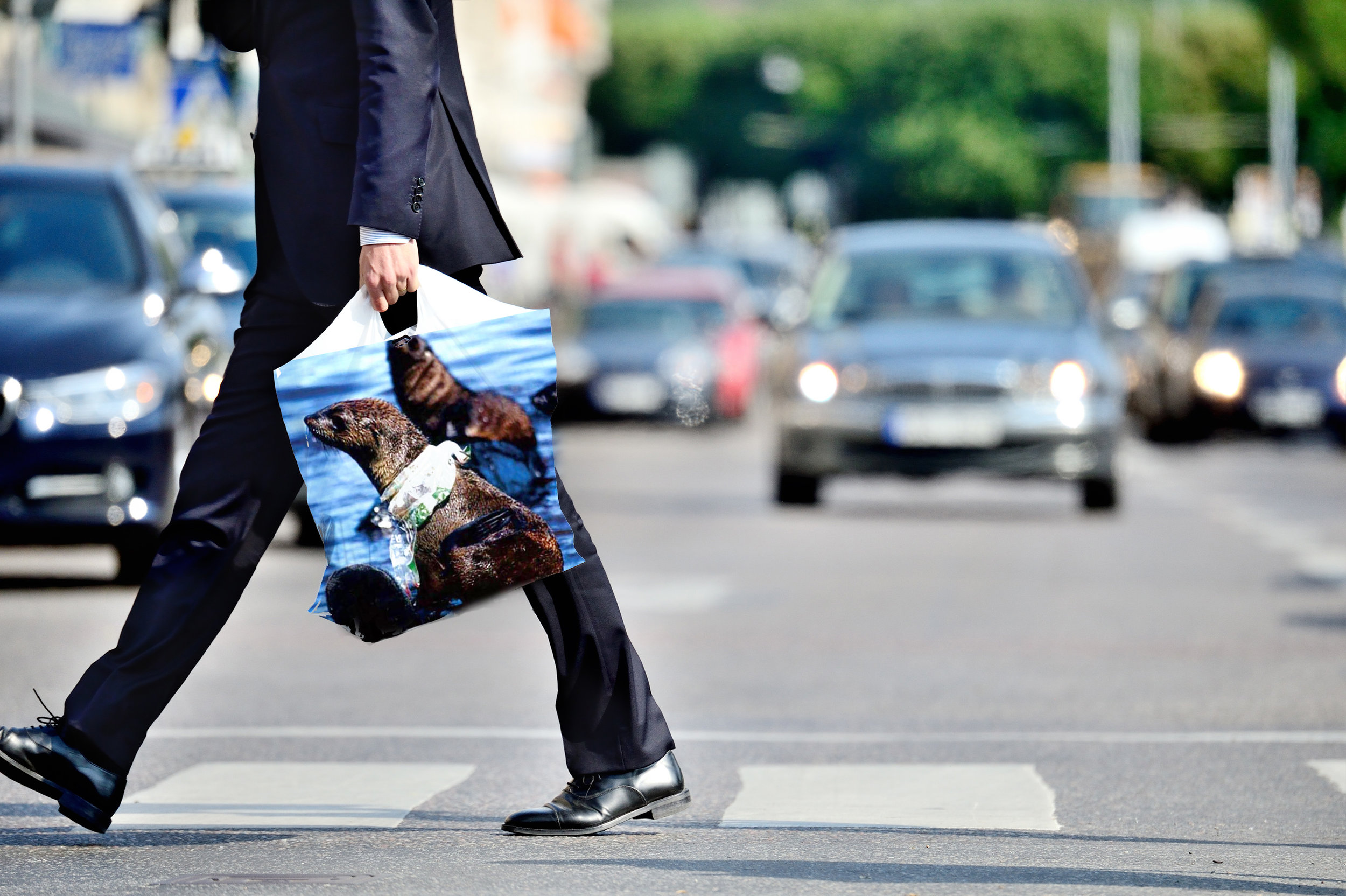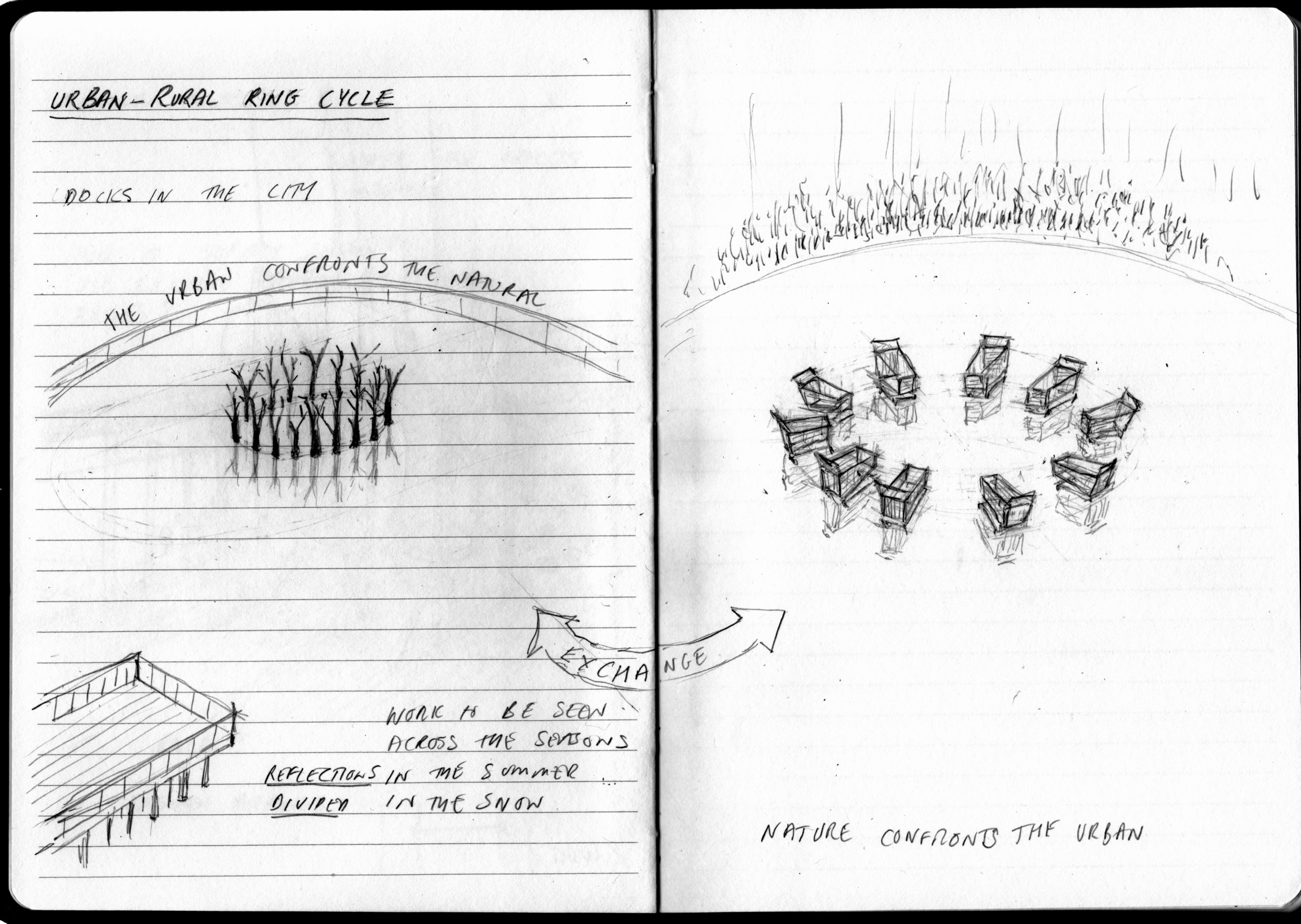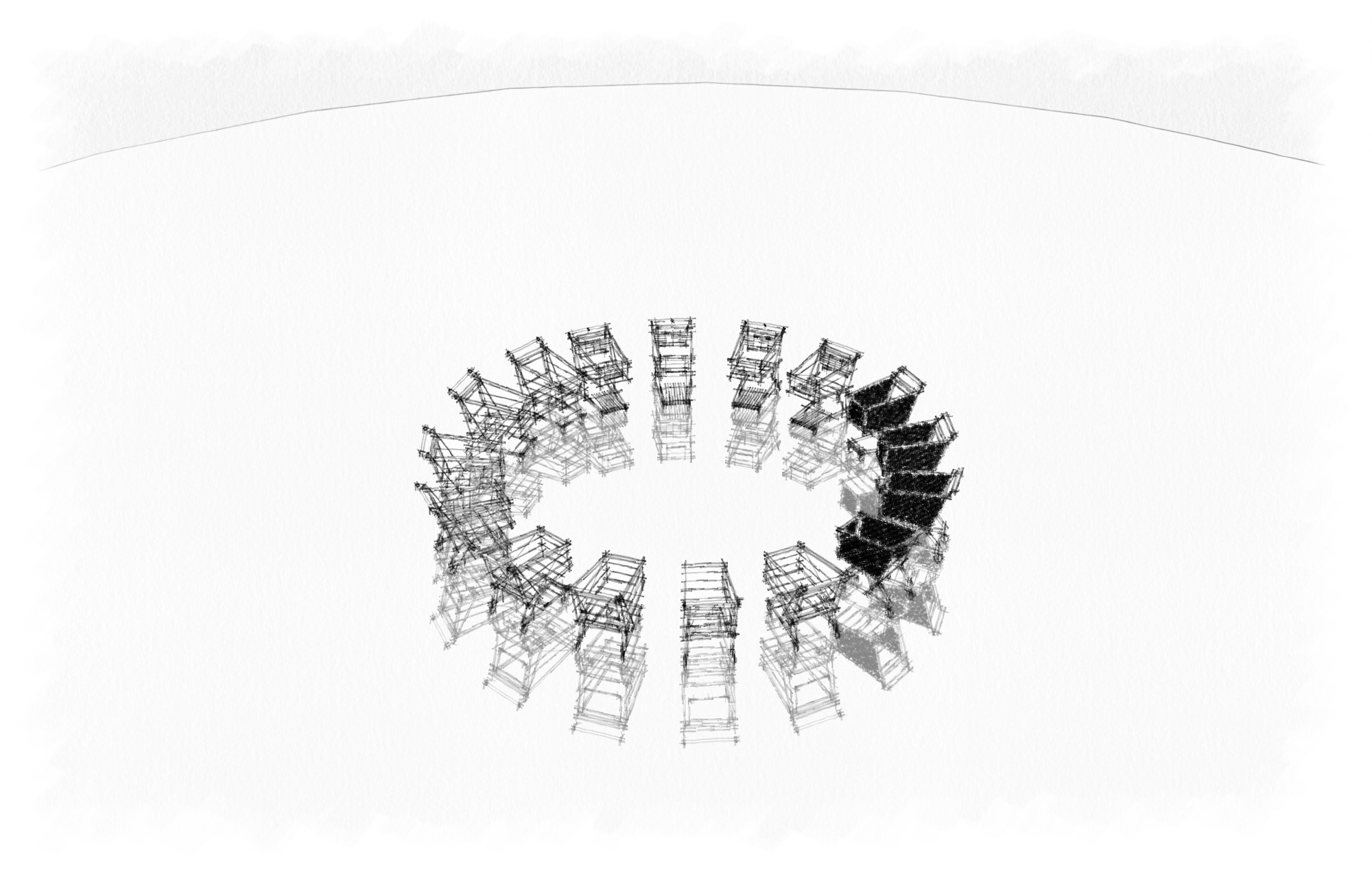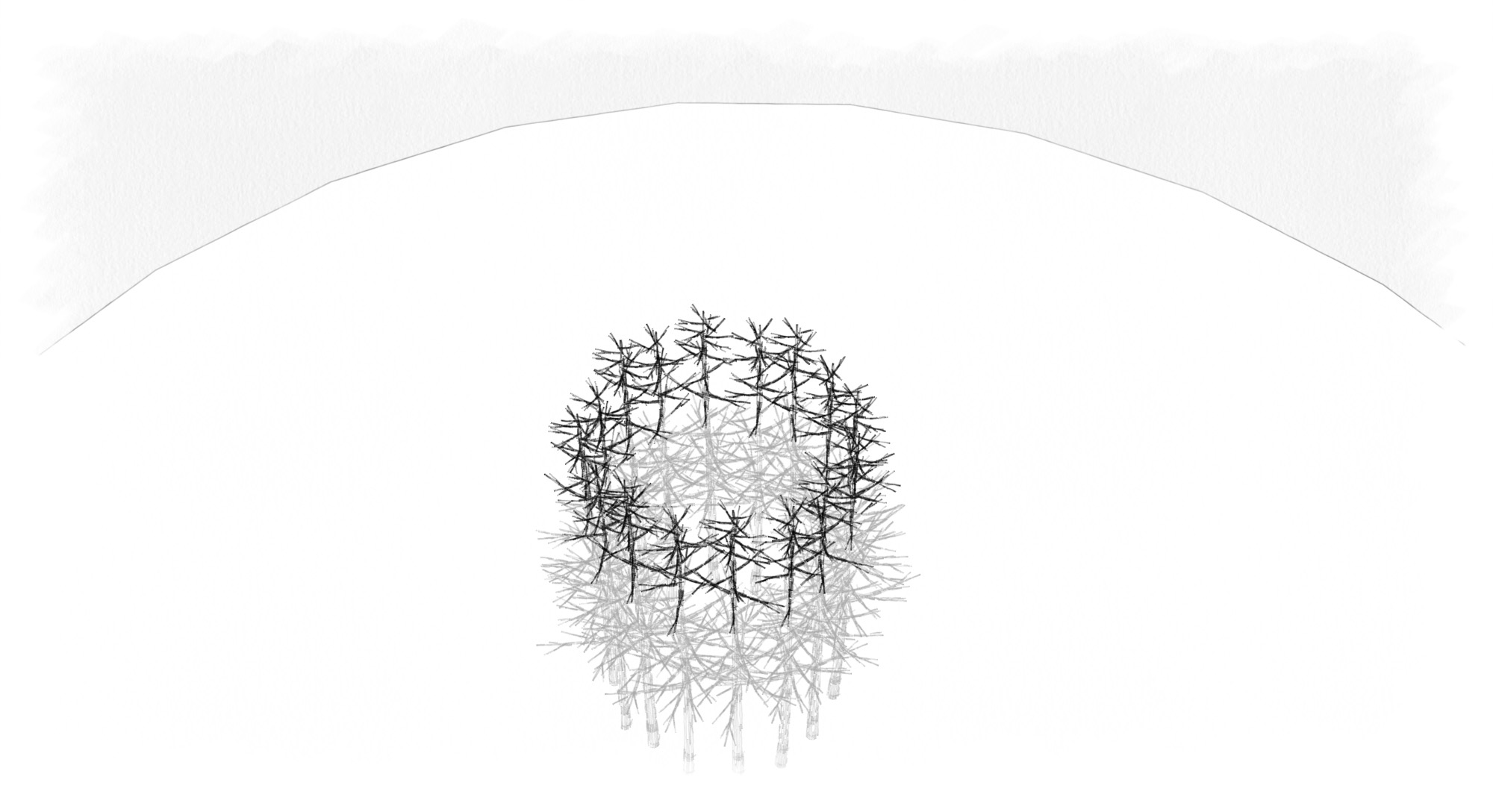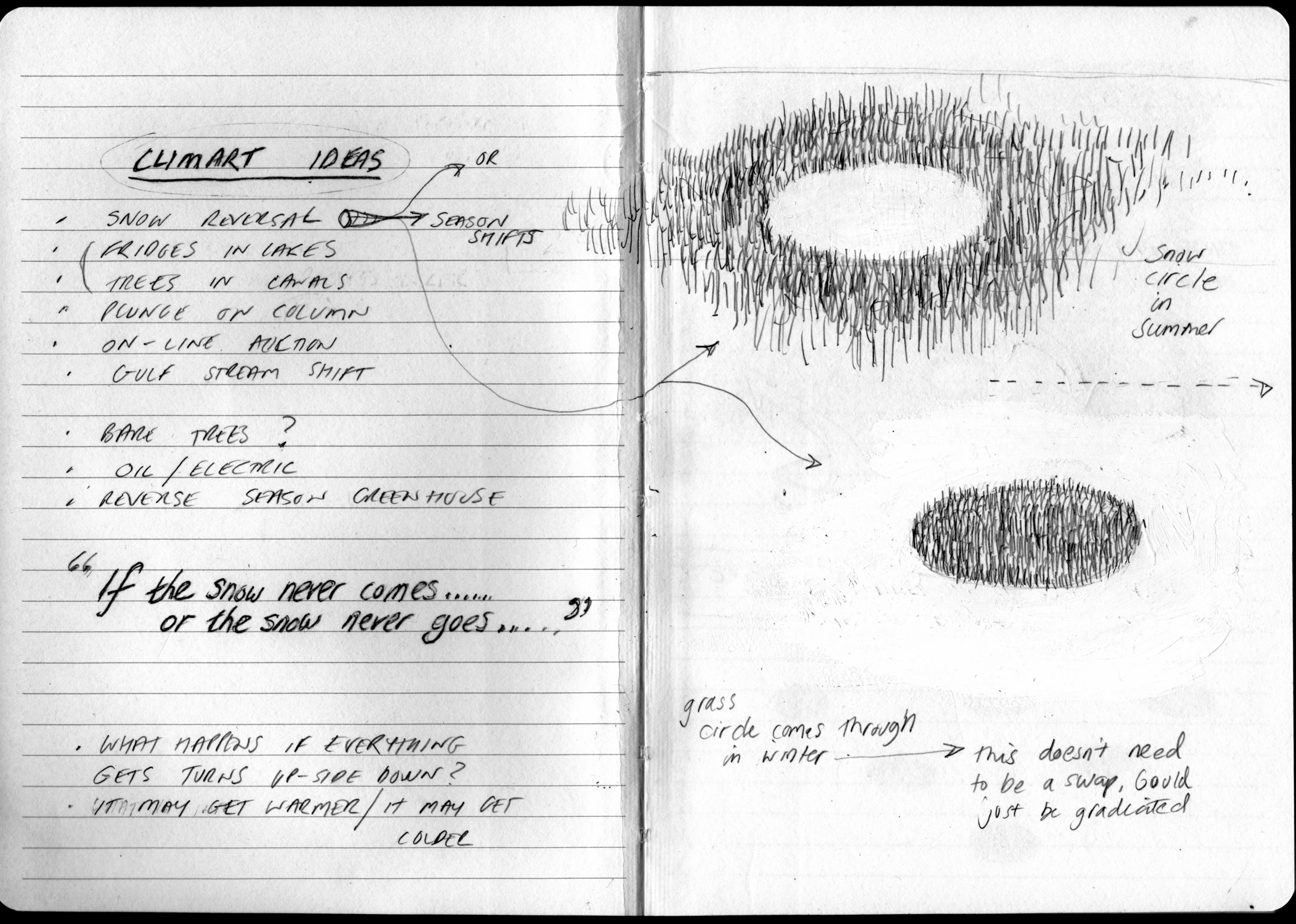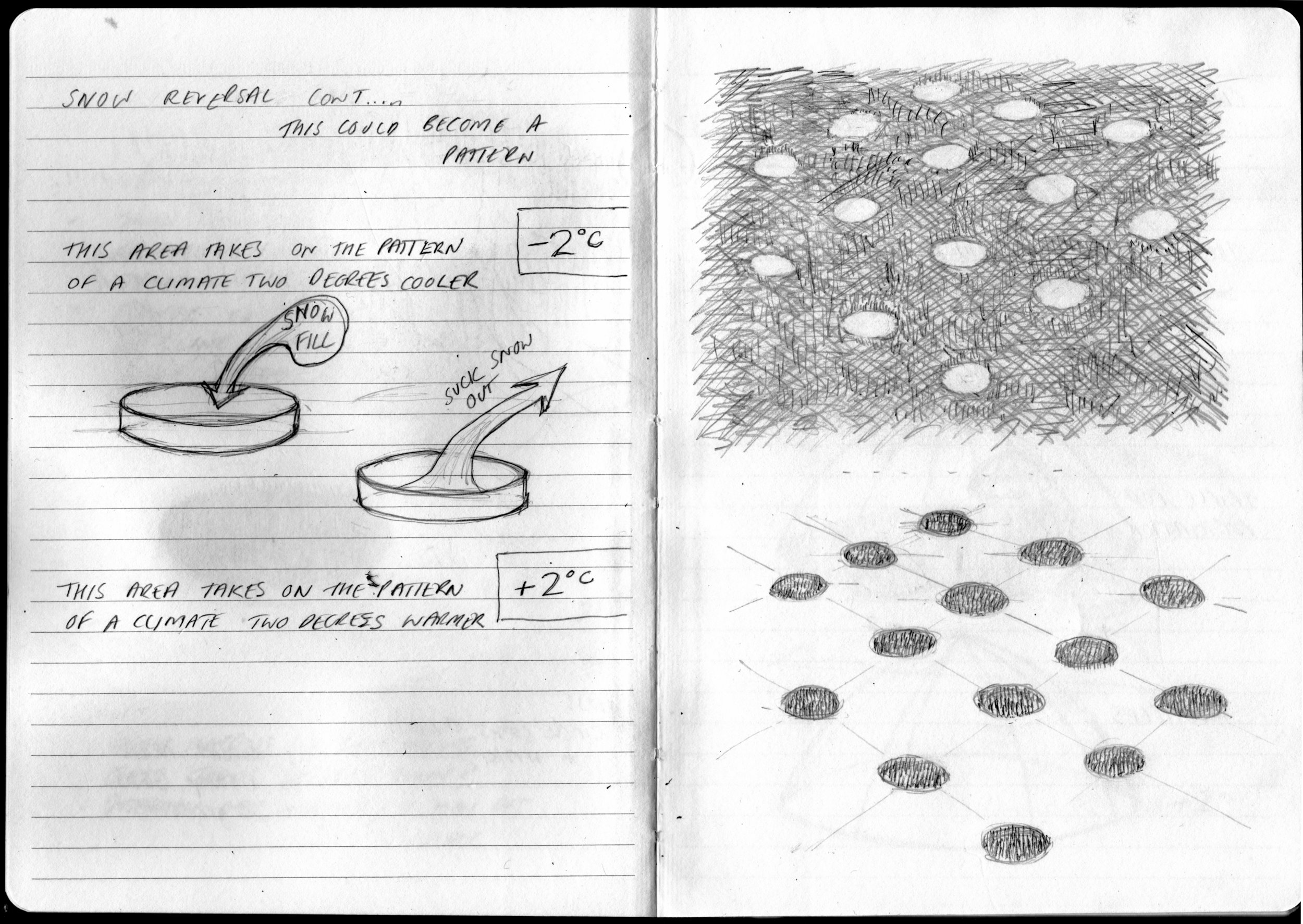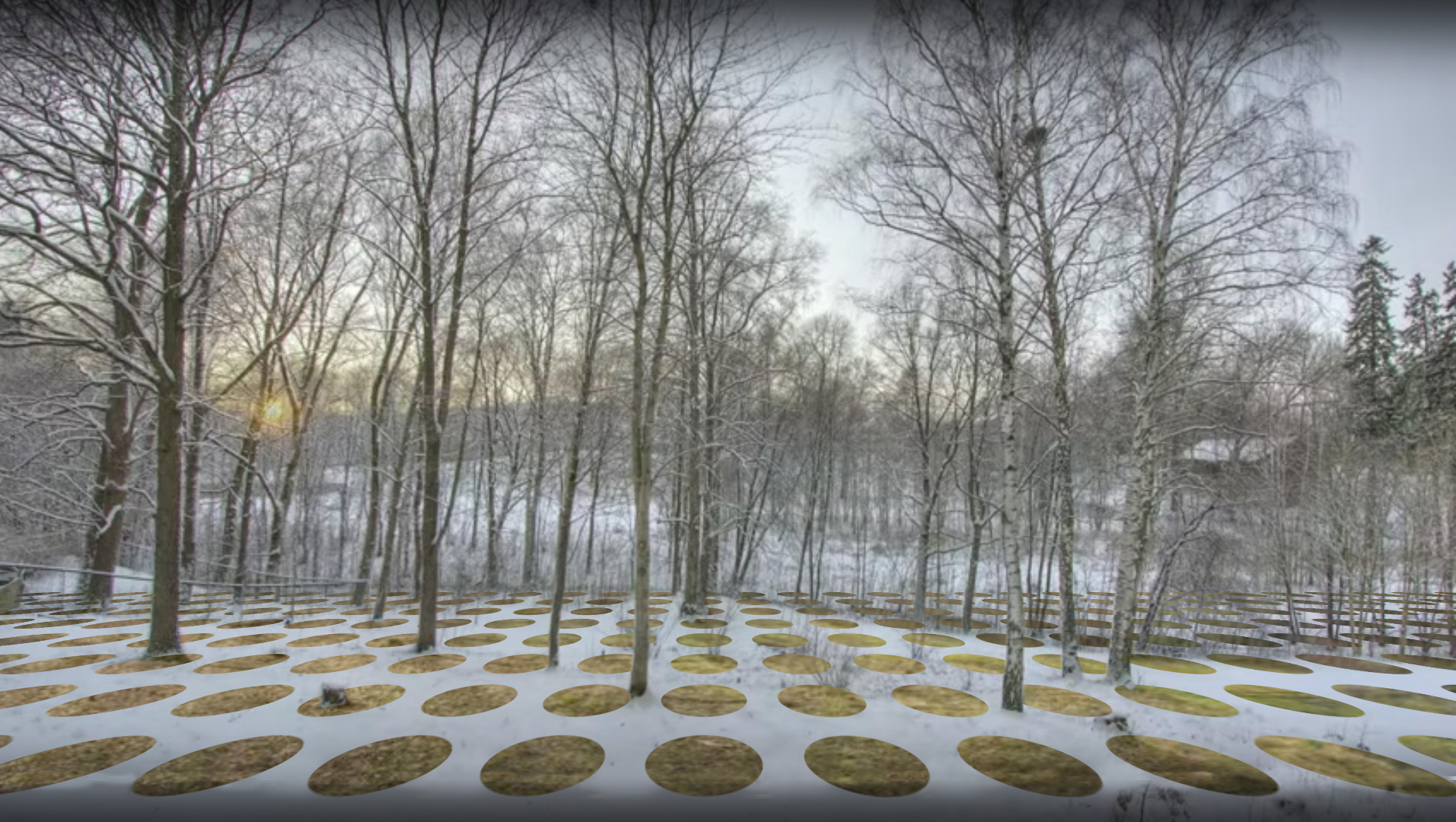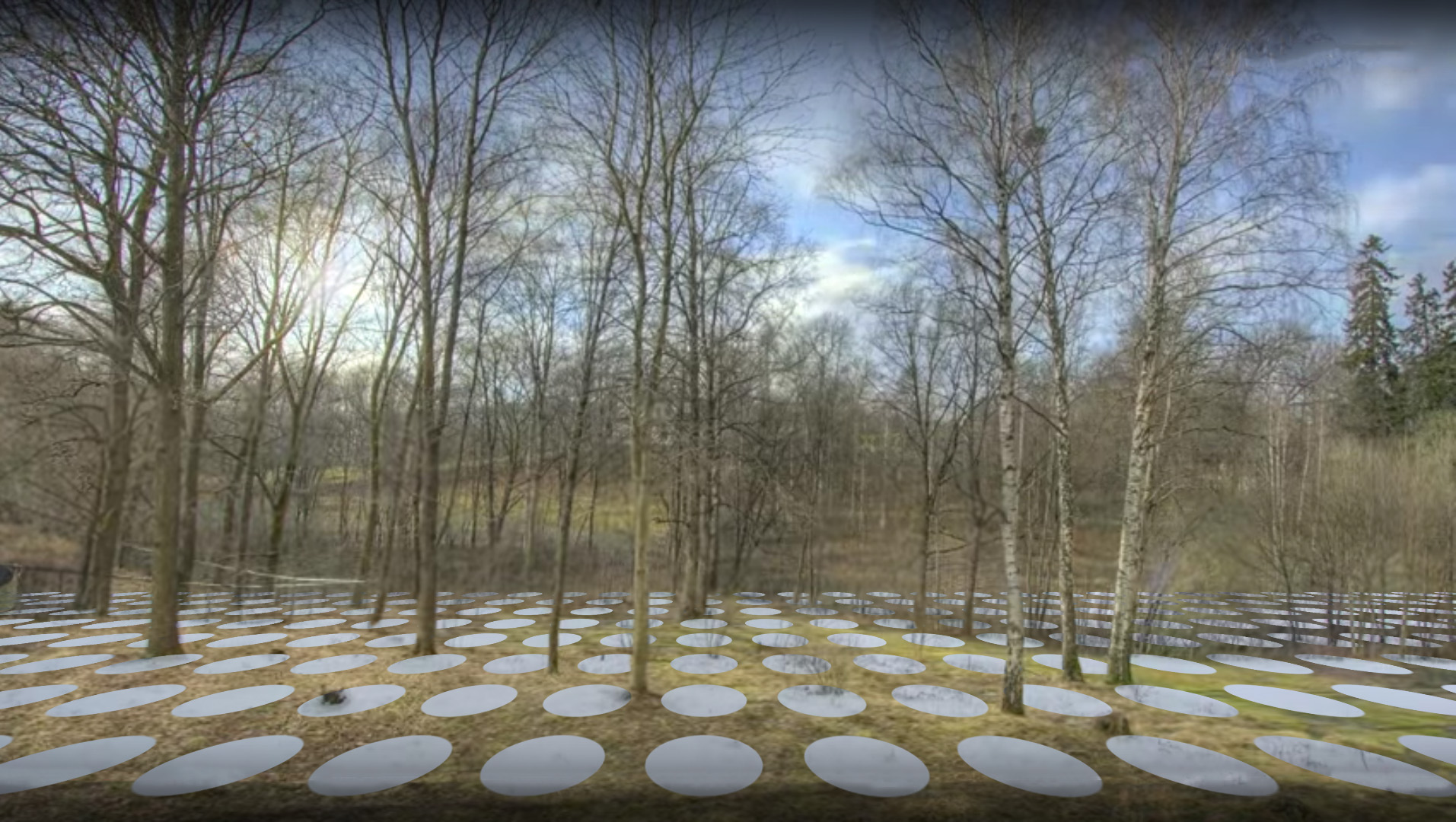The Climart team met in Trondheim to discuss Michael's initial proposals. After much discussion the team decided to carry on developing two proposals, Pollution Pods and the On-lines auction to test which would be the most viable. Below is a selection of the proposals.
Weather Gone Wild
Extreme heatwaves and heavy rain storms are already happening with increasing regularity worldwide because of manmade climate change. Global warming over the last century means heat extremes that previously only occurred once every 1,000 days are happening four to five times more often. One in five extreme rain events experienced globally are a result of the 0.85C global rise in temperature since the Industrial Revolution, as power plants, factories and cars continue to pump out greenhouse gas emissions. The number of extreme weather events are predicted to increase into the future. Weather Gone Wild transposes us from the present day to a moment in the 22nd Century when climatic diversity will have increased by twenty percent.
Within a chosen bus shelter the visitor’s acoustic experience of the current weather conditions will be subtly exaggerated. When it rains a little, the sound of rain will pound the roof of the structure; when it rains a lot, the visitor will experience rolling thunder in the distance; when there is a breeze, strong winds will ripple through the tree tops and as the temperature starts to rise, the listener will hear crickets and Mediterranean birds. These sounds will blend with the real sounds already present in the environment to create a convincing sonic environment. Speakers will be dispersed across the internal frame of the structure to create a three-dimensional soundscape. The weather conditions will only be exaggerated to the extent that the visitor’s visual and aural experiences will be readable as a whole so the visitor will not be able to distinguish between the real and the augmented sounds.
A weather station will be located on top of the bus shelter which will activate prerecorded weather sounds, so the sonic response to the current weather conditions will be localized to structure. As soon as a few rain drops hit the shelter the sound samples will change accordingly.
From this lookout people will be able to take a moment to reflect on the present and consider the future……
The Final Bid: An On-lines Auction
Each month an advert in the Trondheim Press will ask for specific items to auction. Chairs, fridges, washing machines, computers, curtains, bicycles, red objects, round objects, small objects, transparent objects, illuminated objects...will then be collected. There is nothing unusual about this process, niche auctions have existed for years. But in this case, these objects will undertake a journey, which will transform them into a meanwhile sculptural form before being sold to the highest bidder.
These objects will be suspended at the height of their reserve price until the open- ing of the auction. This sculpture will draw its aesthetic allure from the subtle and not so subtle differences between these objects, which share the same classification. After being observed for a week, the sale will begin and the objects height will rise or lower depending on the values of the bids. Electronic motorised winches will be directly linked to the auction site on- line allowing the objects to automatically controlled. This event conflating the commercial with the cultural, will encourage the people from Trondheim to circulate objects they no longer need, promoting an economy of reuse.
Finally, the objects will be removed from their elevated positions and taken away by their new proud owners. An empty space will await the next wave of objects, sellers and buyers.
Pollution Pods
Six geodesic domes are connected to form a ring. Within each dome the air quality of six global cities is recreated. A carefully mixed recipe emulates the relative presence of ozone, particulate matter, nitrogen dioxide, sulphur dioxide and carbon monoxide which pollute these cities. Starting from the hosting city, the visitor will pass through increasingly polluted cells, from dry and cold locations to hot and humid.
The release of toxic gases from domestic and industrial sources both increase the rate of global warming and have a direct effect on our present day health. In the West, in cities such as London, one in five children suffer from asthma. Whilst in the developing countries such as Delhi, over half the children have stunted lung development and will never completely recover. However, this pollution is difficult to understand through images, as the smog of such as Delhi seems almost romantic and much of the most dangerous toxins are not visible at all.
Much of this pollution is driven by the insatiable appetite of capitalist consumerism. Whilst we here in the developed world live in an environment with relatively clean air, people in countries such as China and India are being poisoned by the air borne toxins created from industries fulfilling orders from the West.
The experience of walking through the pollution pods demonstrates that these worlds are interconnected and interdependent. Our need for ever cheaper goods is reflected in the ill-health of many people in world and in the ill-health of our planet as a whole. In this installation we can feel, taste and smell the environments that are the norm for a huge swathe of the world’s population. Perhaps the visceral memory of these toxic places will make us think again before we buy something else we don’t really need.
Climate Change Incubators
Climate Change Incubators is a variant of the previous proposal also allowing the viewer to understand the impacts of climate change across chosen sites in Trondheim. Three geodesic domes will be erected over an area of fallow land within the city. The first dome will be heated to maintain a temperature two degrees above the current outdoor temperature, the second will be cooled to maintain a temperature two degrees below the current outdoor temperature and the third will remain consistent with the outdoor temperature. Either the pods will cultivate the pre-existing land or could be planted with seeds contributed by local schools, gardeners and residents. In either case, the land and the planting within all three domes will need to be as identical as possible.
Each week a camera built into the dome will photograph the plot and automatically post the images on Instagram so partici- pants can view the growth of their seeds remotely.
“You never change things by fighting the existing reality. To change something, build a new model that makes the existing model obsolete.” Buckminster Fuller
Port 2 Portal
The transition in Europe from the produc- tion of goods, to the production of media content creates the illusion that we are us- ing less of the world’s resources. It surprises many people to learn that each single search action in Google uses as much ener- gy as making a cup of tea. Media content is now broadcast on a multitude of networks and appears magically on the customers’ screens, whether this takes the form of a phone, computer or television set.
In the past, televisions were crafted to look like other furniture, but over the years the mass of this equipment has dematerialised until now it can be as thin as an i-pad or as intangible as a projection. Meanwhile, the rejected, but fully functional, cathode ray tube televisions sit dormant with their owners too embarrassed to throw them away. With an estimated 20+ million un- used TVs and computer monitors already in our homes and offices, initiatives are being introduced in an attempt to prevent old electronics ending up in landfills. Nulife Glass’s CRT recycling furnace technology can process the glass from approximately 60 tonnes of televisions a day. The recycling furnace extracts the toxic lead from the glass in a safe and environmentally sustainable way. The process has no emissions, creates no waste and avoids export of hazardous material around the globe.
A record amount of electrical and electronic waste was discarded around the world in 2014, with the biggest per-capita tallies in countries that pride themselves on environmental consciousness. In 2013, the e-waste total was 39.8m tonnes – and on present trends, the 50-million-tonne mark could be reached in 2018. Topping the list for per-capita waste last year was Norway, with 28.4kg (62.5lbs) per inhabitant.
Port2Portal will work in three acts:
Act I Adverts will be put in the Trondheim press and invitations will spread through the web asking people to donate their televi- sion sets to the project. These sets will be collected. Media students from Depart- ment of Art and Media Studies at NTNU will document the process of this collection and the stories which lie behind the televi- sion sets.
Act II A series of geodesic domes will be con- structed and the televisions will be embed- ded into their frameworks. These domes will float in Trondheim’s quays. Whilst the water is still, the reflections of the domes will make these objects appear as globes. The student documentaries will be broad- cast on the screens.
Act III The domes will be dismantled and the televisions brought to Nulife Glass to be processed. The glass recovered from the televisions will be used to make a perma- nent intervention within Trondheim. For perpetuity, participants will be able to see the results of their contribution.
The Norwegian's Happily Pay for their Plastic Bags
In the UK, the introduction of a payment for plastic bags had a huge effect in reducing the number of bags being produced and disposed of. In Norway this payment is seen as just another tax and has not put Norwegians off buying the bags. The prints on these demonstrate the possible outcomes for the bags if they enter the eco-system.
The Urban Rural Ring Cycle
The way we perceive environmental disasters, which are ascertained to be a consequence of climate change, are often affected by documentary images showing radical juxtapositions of objects and sites; cars stranded in rivers, houses collapsed upon trees, timber strewn across seas.... We are now so familiar with these images that they provide a powerful shortcut to the climate change debate. These image have become ready-made signifiers; for flooding, hurricanes, sinking container ships....
I was quite astonished to be shown what appeared to be picture book Scandinavian wilderness only minutes away from the centre of Trondheim. Within half an hour a visitor could either be on the banks of a seemingly tranquil and untouched lake deep in snow, or on a rainy quayside development full of fashionable bars and shops. I thought this could give an opportunity for an exchange, to play with our preconceptions and our clichés.
Other conversation revealed that, contrary to my impression that Norwegians were law abiding citizens with huge civic pride, Norwegians did in fact have the same habit as other Western mortals who love throwing objects into the docks, canals, rivers and lakes. This led me to consider a project which would recover the jettisoned objects from the docks of Trondheim and recover the mostly natural matter from the lakes around Trondheim, such as Lianvatnet. These recovered objects would then be swapped from either their urban or rural location and mounted and illuminated within the water at their new location.
This emergence from the water of the ‘other’ suggests a major reconfiguration of the land, a place where nothing is what is seems and nothing is where it should be. This uncanny conflation maintains an unsettling uncertainty, as if we can never be sure of where we stand or where we should stand.
If the snow never comes..... or never goes.....
Snow is hugely important to the Trondheimers. In the winter many ski to work and take great pleasure in winter sports and activities, making the long winters bearable. Given its northerly location, the winter changes in temperature have a profound visible impact on the land and cityscape.
This simple artwork allows us to compare two potential versions of Trondheim; one four degrees warmer than the current average temperature and the other four degrees cooler than the current average temperature. Each of these versions are su- perimposed on the other. Both urban and rural locations will be chosen to host the artwork. As the temperature descends to plus four degrees in late October, a grid of snow circles will populate the ground. As
it starts to snow in November/December the pattern will invert appearing as a grid of circles maintained with no snow across the ground. The circles or holes suggest a certain permeability between our current time and a future time; a net that allows us to traverse the multiverse.
The average temperature in Trondheim is between plus four degrees and minus four degrees from late October until the end of April, which allows a possible installation period of seven months.


